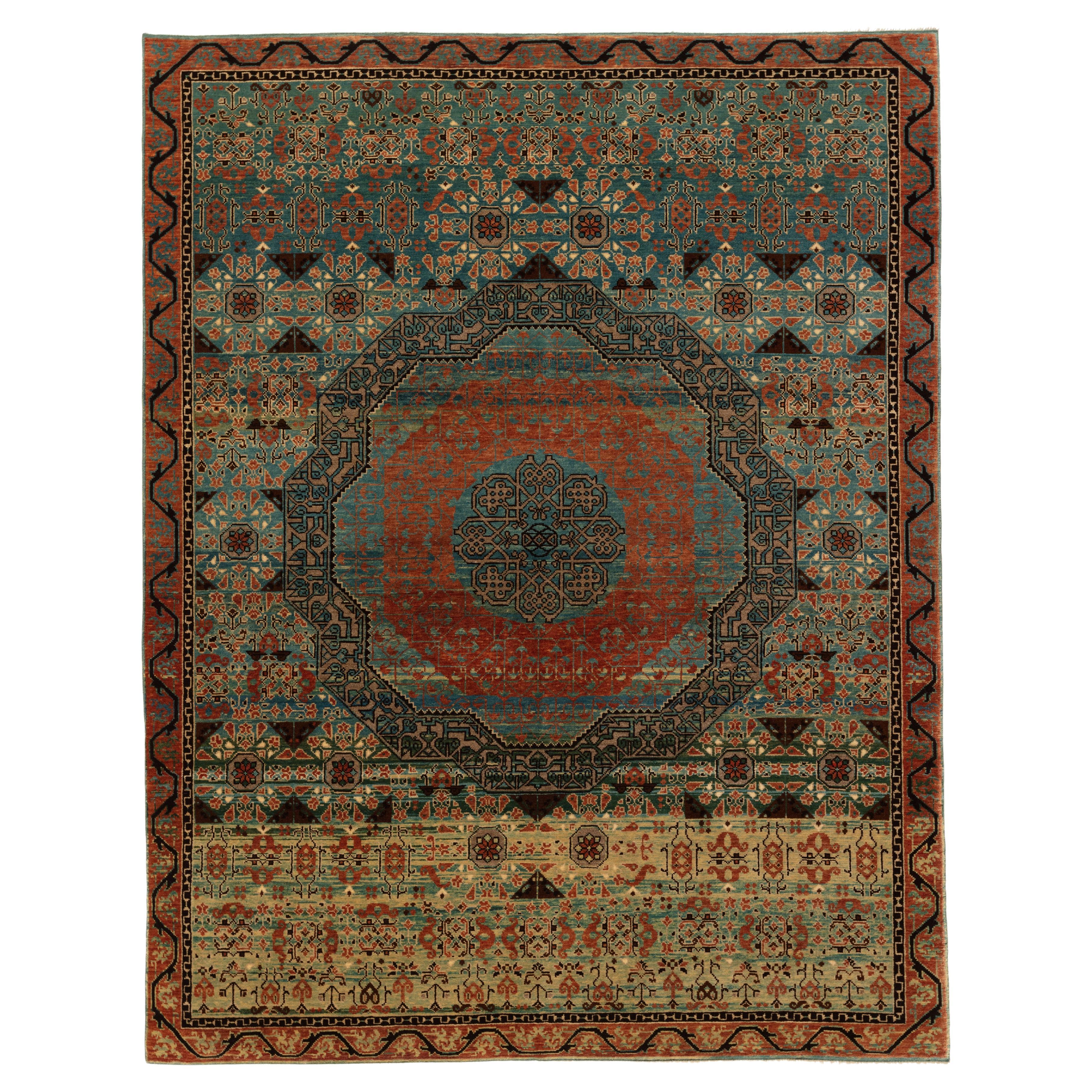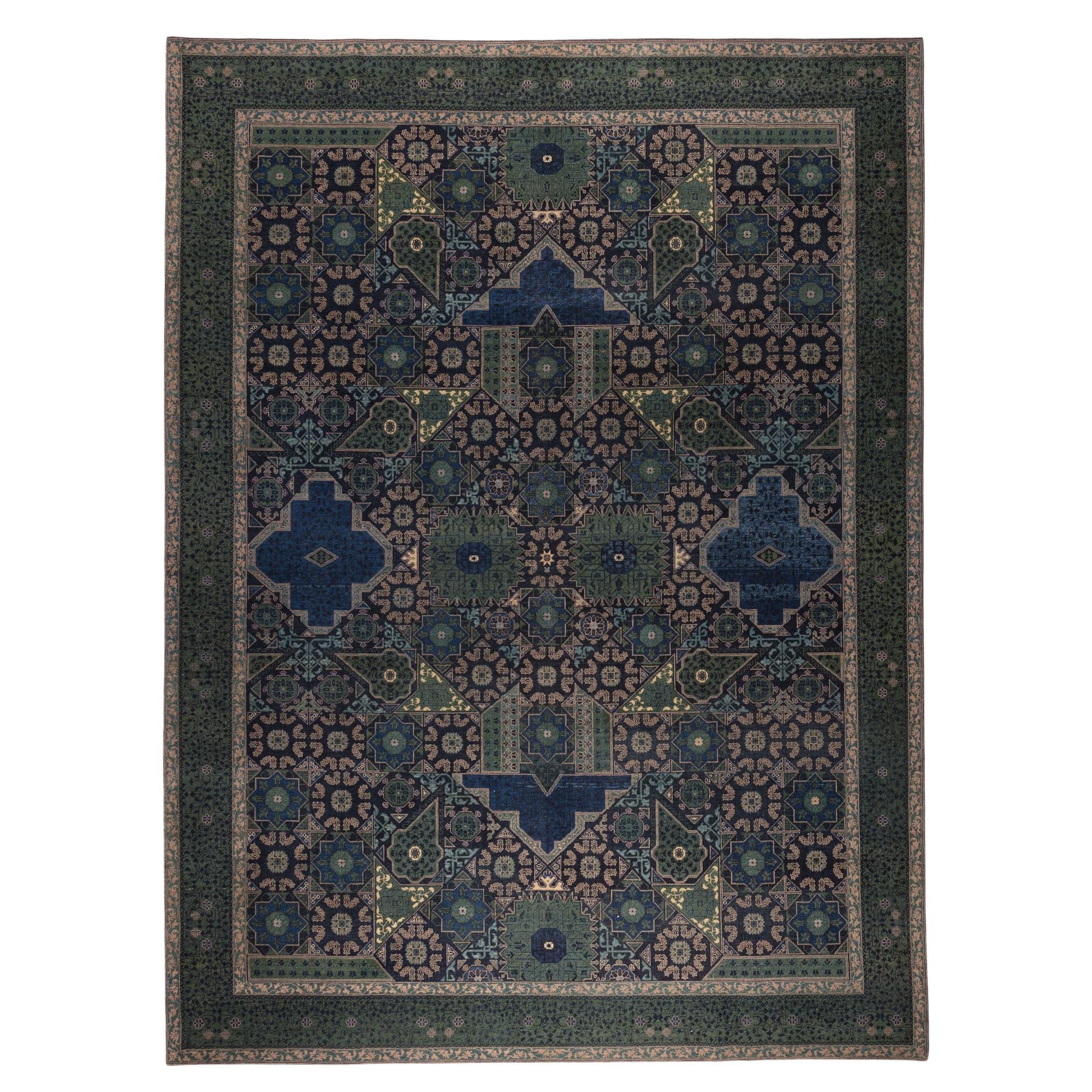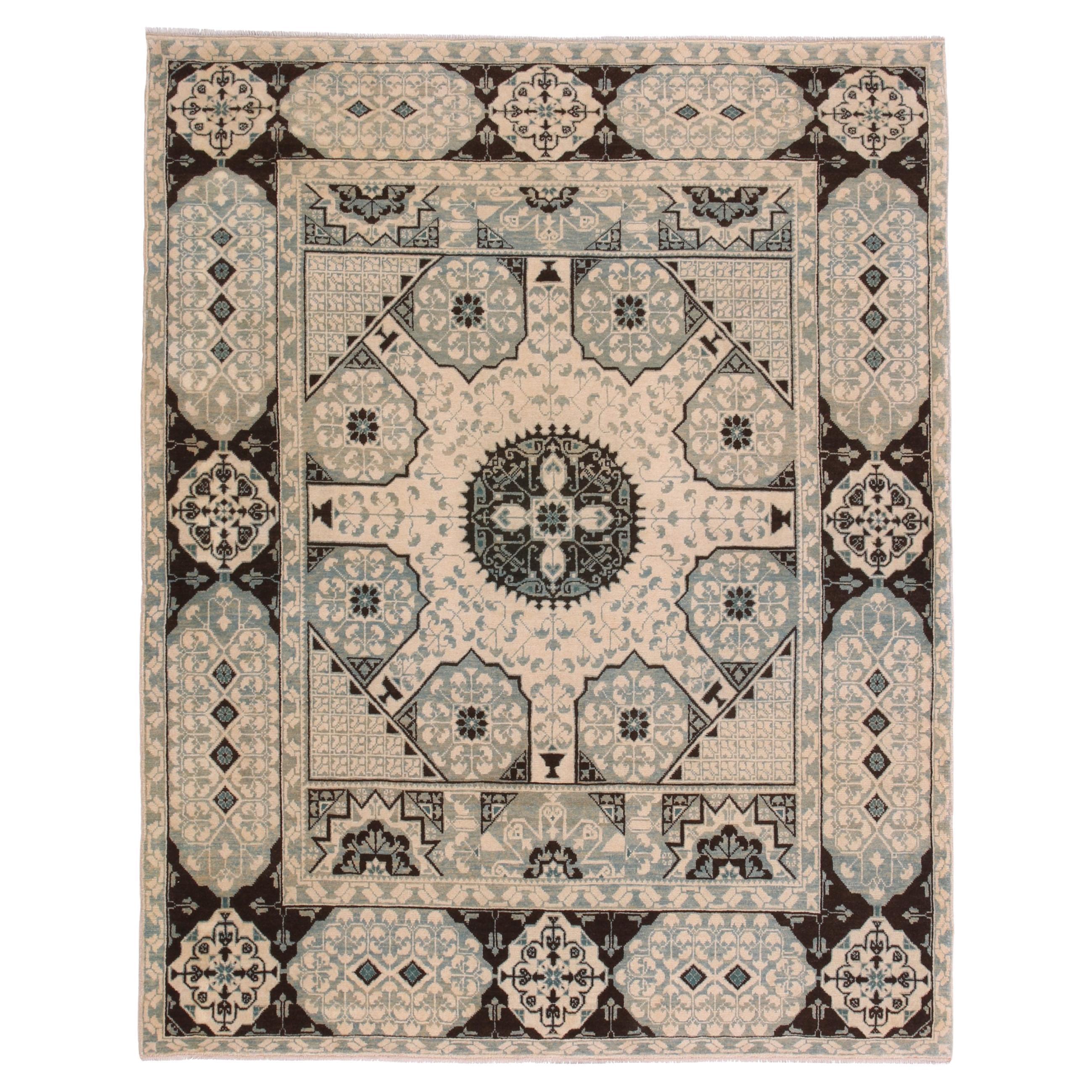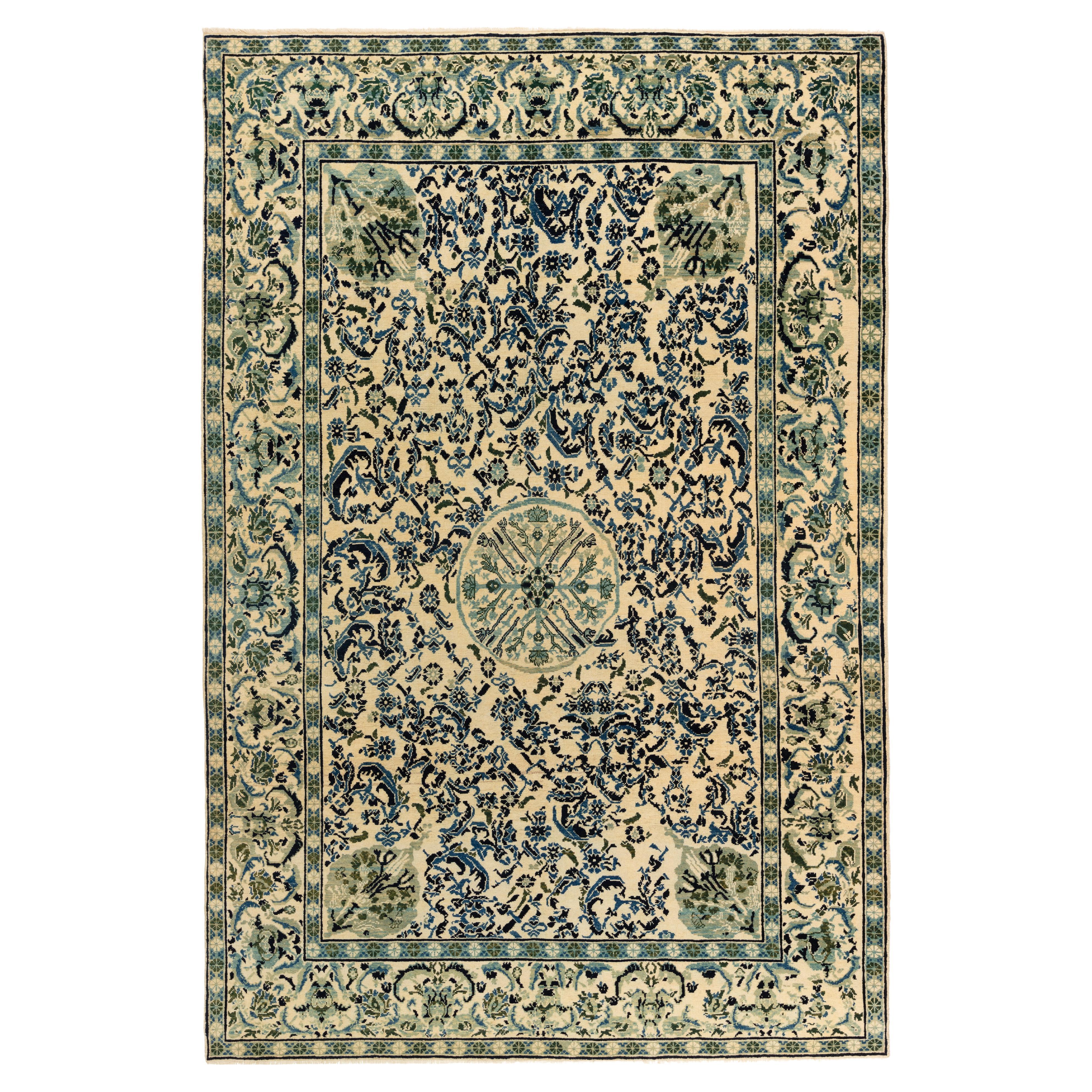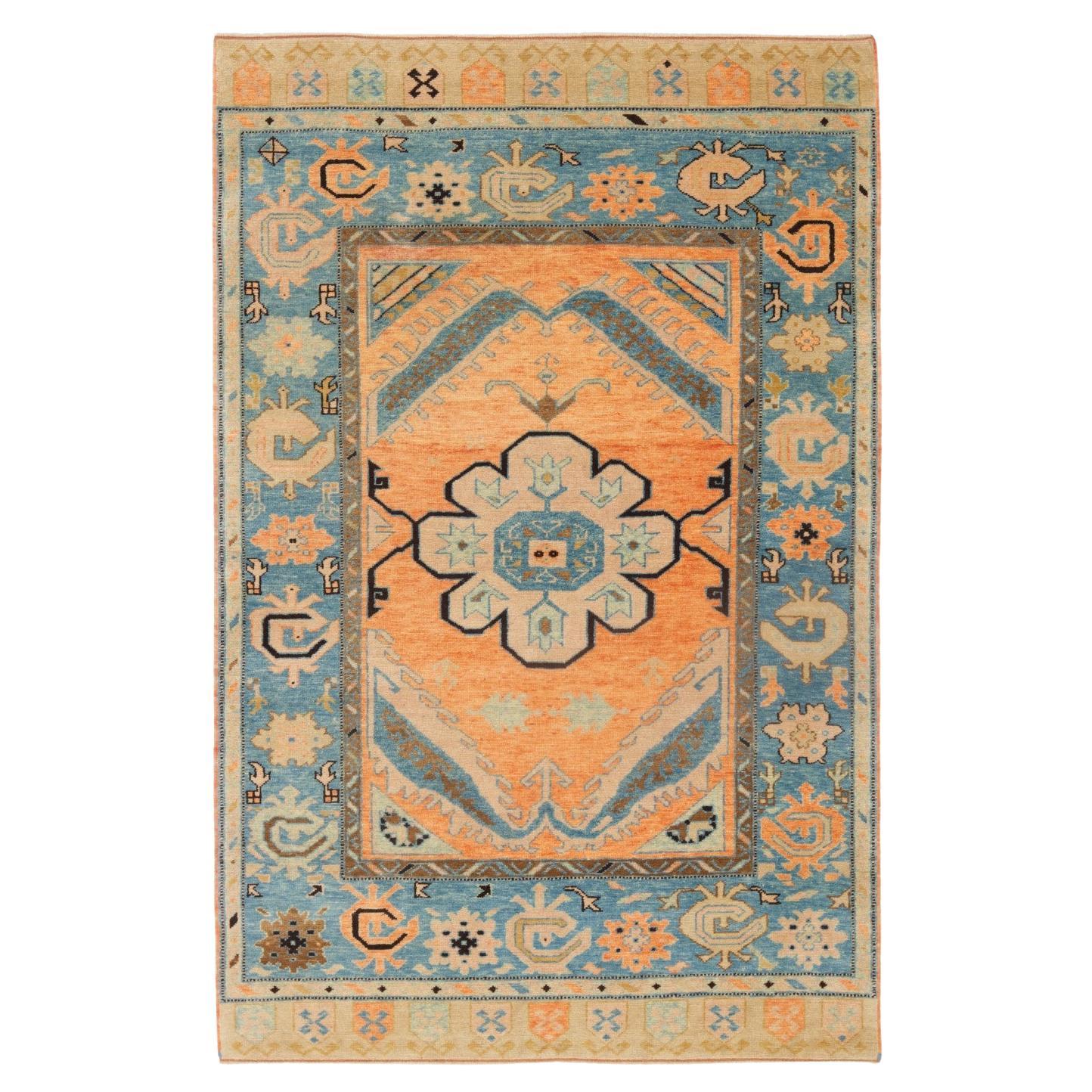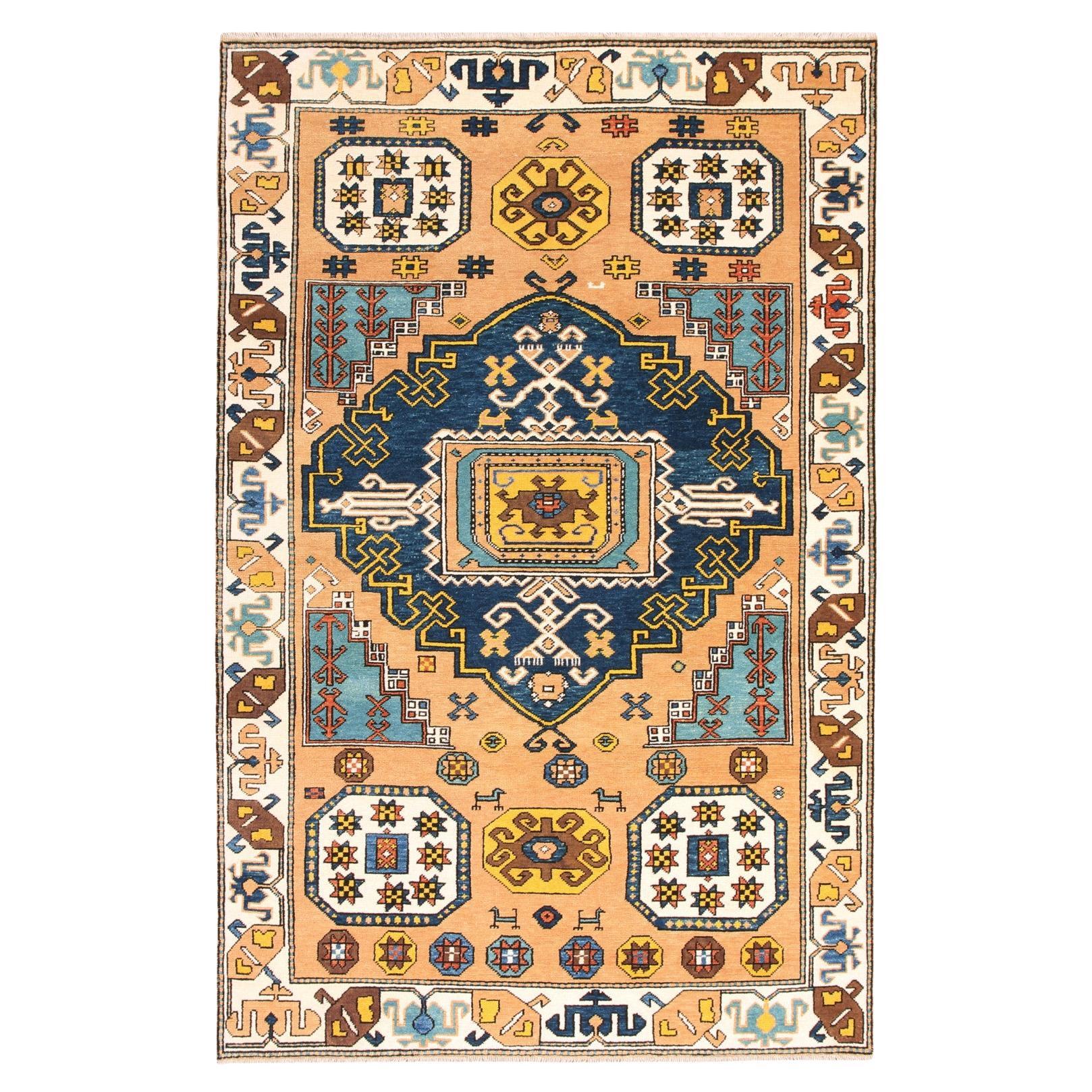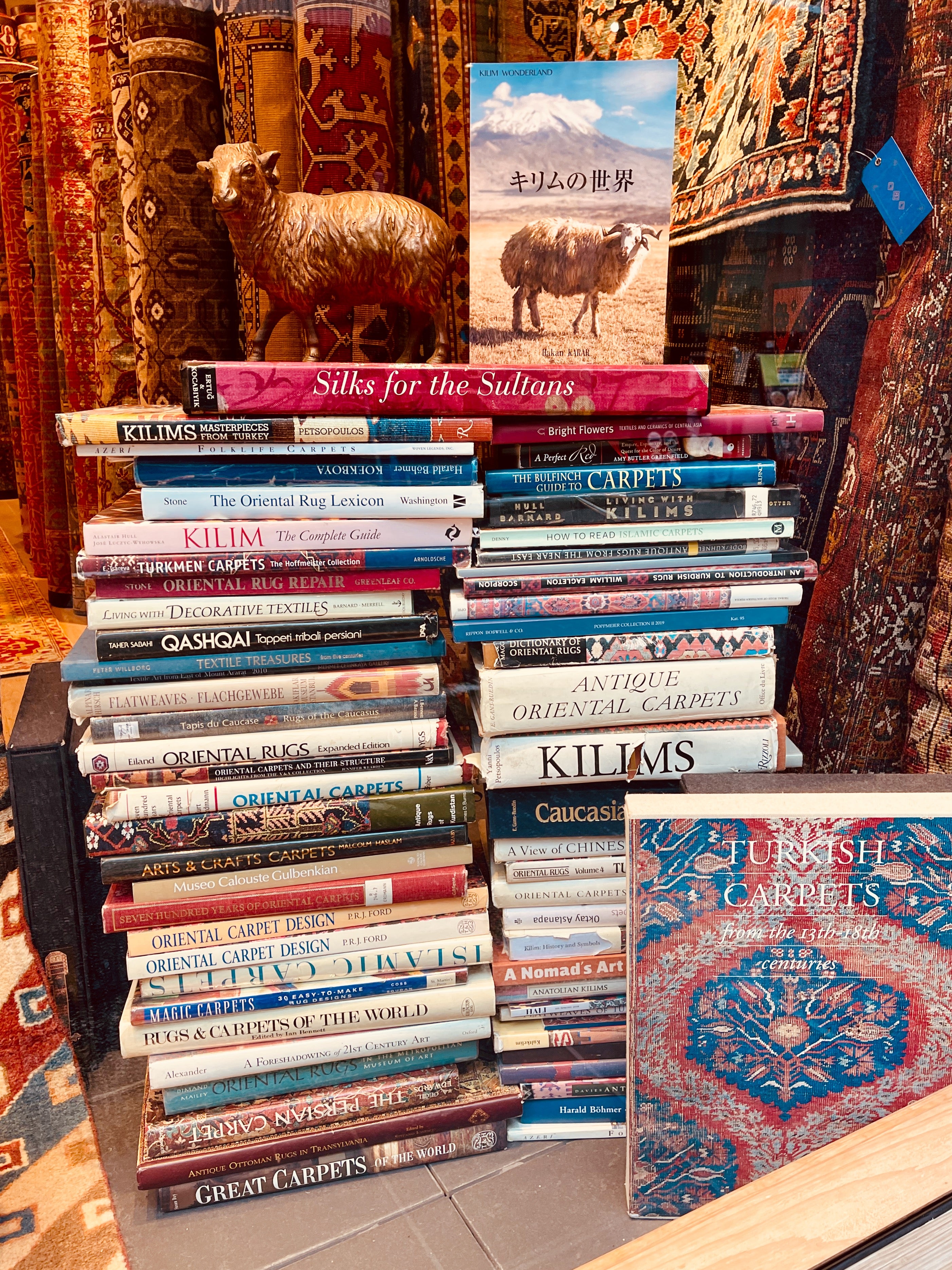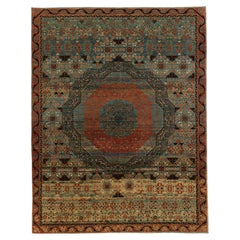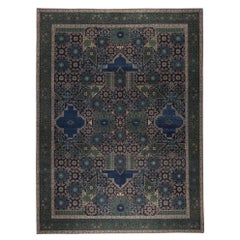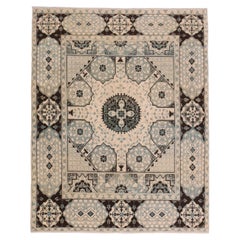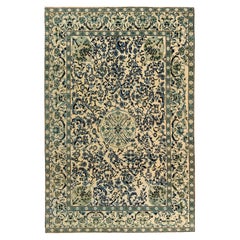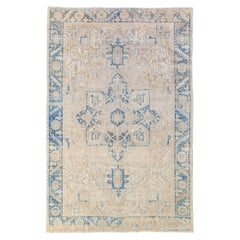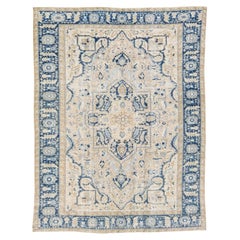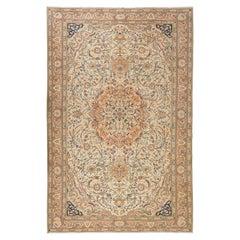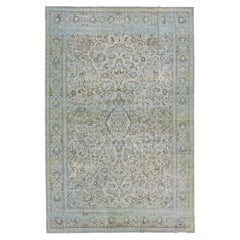Items Similar to Ararat Rugs Mamluk Rug with Cusped Medallion Antique Revival Carpet Natural Dyed
Video Loading
Want more images or videos?
Request additional images or videos from the seller
1 of 7
Ararat Rugs Mamluk Rug with Cusped Medallion Antique Revival Carpet Natural Dyed
$5,300
£4,021.52
€4,598.25
CA$7,402.66
A$8,230.75
CHF 4,297.65
MX$100,188.32
NOK 54,836.09
SEK 51,378.79
DKK 34,317.56
Shipping
Retrieving quote...The 1stDibs Promise:
Authenticity Guarantee,
Money-Back Guarantee,
24-Hour Cancellation
About the Item
The source of rug comes from the David Collection, Copenhagen. This rug with the Cusped Medallion was designed in the early 16th-century rug by Mamluk Sultane of Cairo, Egypt. Once in the Hirth Collection, and later with Ulrich Schürmann in 1965, this piece now belongs to the David Collection, Copenhagen. It is like the Berlin “Lagerfeld” piece, its medallion rests on a field strewn with para-Mamluk elements. Many of the most elegant Mamluk carpets employ the cusped, or scalloped medallion form. It perhaps arrived in Egypt from the Turkmen areas controlled by the Ak-Koyunlu, and later the Safavids; or it may have traveled East from Egypt. The elements characteristic of the para-Mamluk group are chiefly found on carpets with large roundels; two exceptions are the Eskenazi carpet, and the Unger Endre, which is a category of its own. The forms were probably created for the Hapsburg 3-medallion carpet in the MAK Vienna, which exhibits them in their most perfect form.
Attempting to read early carpets produced in workshops in Cairo provides an entirely different set of challenges. Cairene carpets, distinguished by their limited color palette, symmetrical knotting, and unusual construction of S-spun wool (Z-spun wool being the norm almost everywhere in the Islamic world), underwent a sudden change in design sometime after the Ottoman Turks conquered the Mamluk empire in 1517. The Simonetti Carpet was probably woven after the conquest but exhibits the “old” fifteenth-century style of the Mamluks. Long and narrow, it was woven on a standard-sized Egyptian roller-beam loom, capable of producing carpets of varying lengths. It consists of five major focal areas of design in an A-B-C-B-A pattern, meaning the first and fifth and the second and fourth areas are paired, while the middle is unique. We can easily term these five focal areas medallions, but they are geometric in both layout and detail, and their style (as opposed to the actual date of the weaving) predates the carpet design revolution that gave rise to the medallion format. We can surmise that the designs and colors of Mamluk carpets, with their unusual combination of insect-derived red, blue, green, and sometimes yellow, with virtually no undyed white at all, constitute an effort to create a recognizable brand in the early modern market, especially in Europe, where Mamluk carpets such as this, with their subtle coloration, incredibly detailed design, and mosaic-like layout of small and intricately patterned geometric motifs, constituted an appealing alternative to the more coarsely woven and brightly colored carpets from Anatolia, such as Ushak medallion carpets. While the weaving of carpets in the traditional geometric Mamluk designs apparently continued well into the seventeenth century, sometime around the mid-sixteenth century, Cairene weavers began to create an entirely new kind of carpet, using their traditional Mamluk materials, technique, and coloration but reflecting the latest styles then being created at the court of the Ottoman sultans in Istanbul. Our designers interpret the design of the rug, and soft colors are chosen for this rug.
Color summary: 7 colors in total, most used 4 colors are;
Natural Wool Color 320 (Specially Washed)
Turquoise 330 (Spurge – Madder Root – Indigo – Walnut Husk)
Pale Green 439 (Chamomile – Indigo)
Charleston Green 50 (Spurge – Indigo)
Group: Islamic Rugs Family
Area: Mamluk
Material of Pile: Natural Dyed Hand-spun Wool
Material Warp / Weft: Wool on Wool
Structure: Symmetrical knot
Knots Density: 39x39
Production Place: Southeastern Anatolia – Diyarbakir
Stock Location: Tokyo
Size (EU): 201 X 153cm
Size (US): 6.7" X 5.0"
Area (EU): 3.1m²
Area (US): 33.1ft²
- Creator:Ararat Rugs (Manufacturer)
- Dimensions:Width: 60.24 in (153 cm)Length: 79.14 in (201 cm)
- Style:Revival (In the Style Of)
- Materials and Techniques:
- Place of Origin:
- Period:
- Date of Manufacture:2022
- Production Type:New & Custom(One of a Kind)
- Estimated Production Time:Available Now
- Condition:
- Seller Location:Tokyo, JP
- Reference Number:Seller: 003391stDibs: LU8206233062502
ARARAT RUGS
We know and believe that the geography we come from, our past, and our lifestyle are the most important bond between us to carry the oriental carpet art and culture to the next generations along with our core values in our ongoing growth journey.
We are aware that the way to achieve this goal and carry this priceless art and culture to the future depends on a lot of work with all our people every day while adhering to our core values.
For us, art is meaningful in the sense that it brings together various cultures around the world. It is an honor for us that oriental carpet art and culture have been instrumental in this for centuries and that we are a part of this business.
We are tirelessly keeping an eye on auction house information around the world about carpets. New York's Metropolitan, London's Victoria & Albert Museums, and other famous art museums, as well as small specialized museums that house private collections, and books about oriental carpets to collect information on outstanding carpet designs and patterns from around the world. It's our Self-improving and Self-developing culture.
As Turkish Culture of Hospitality, the Kurdish Culture of Generosity, and as Japanese Culture of Business Punctuality; are the most important values that this multicultural background has taught and bequeathed to us. It is essential and valuable for us that you feel this feeling not only by looking at our oriental carpets but from the moment you contact us.
About the Seller
5.0
Platinum Seller
Premium sellers with a 4.7+ rating and 24-hour response times
Established in 1970
1stDibs seller since 2023
55 sales on 1stDibs
Typical response time: 3 hours
- ShippingRetrieving quote...Shipping from: Tokyo, Japan
- Return Policy
Authenticity Guarantee
In the unlikely event there’s an issue with an item’s authenticity, contact us within 1 year for a full refund. DetailsMoney-Back Guarantee
If your item is not as described, is damaged in transit, or does not arrive, contact us within 7 days for a full refund. Details24-Hour Cancellation
You have a 24-hour grace period in which to reconsider your purchase, with no questions asked.Vetted Professional Sellers
Our world-class sellers must adhere to strict standards for service and quality, maintaining the integrity of our listings.Price-Match Guarantee
If you find that a seller listed the same item for a lower price elsewhere, we’ll match it.Trusted Global Delivery
Our best-in-class carrier network provides specialized shipping options worldwide, including custom delivery.More From This Seller
View AllArarat Rugs Mamluk Rug with Cusped Medallion Antique Revival Carpet Natural Dyed
By Ararat Rugs
Located in Tokyo, JP
The source of the rug comes from the David Collection, Copenhagen. This rug with the Cusped Medallion was designed in the early 16th-century rug by the Mamluk Sultanate of Cairo, Egy...
Category
21st Century and Contemporary Turkish Revival Turkish Rugs
Materials
Wool, Natural Fiber, Organic Material
Ararat Rugs Mamluk Carpet, 16th Century Antique Revival Rug, Natural Dyed
By Ararat Rugs
Located in Tokyo, JP
The source of the rug comes from the book Völker, Angela, Die orientalischen Knüpfteppiche das MAK, Vienna: Böhlau, 2001: 42–5. This rug with the central star was designed in the early 16th century rug by Mamluk Sultane of Cairo, Egypt. It is exhibited at MAK – Museum of Applied Arts, Vienna Austria. As its impressive size, materials, and design quality suggest, the carpet is a product of an accomplished court workshop and likely dates from the late period of the last Mamluk dynasty. The quantity of the colors used speaks for an earlier date around 1500; the delicate vegetal border with leaf tendrils and the characteristic umbrella leaves...
Category
21st Century and Contemporary Turkish Revival Turkish Rugs
Materials
Wool, Natural Fiber, Organic Material
Ararat Rugs Mamluk Carpet with Cup Motif, Antique Revival Rug, Natural Dyed
By Ararat Rugs
Located in Tokyo, JP
The source of the rug comes from the book Renaissance of Islam, Art of the Mamluks, Esin Atil, Smithsonian Institution Press, Washington D.C., 1981 nr.125. This a rug with a cup motif design late 15th-century rug from Mamluk Sultane of Cairo, Egypt. It is exhibited at the Washington D.C. The Textile Museum, R.16.1.2 . The layout of this rug is characteristic of the smaller, almost square Mamluk carpet. A wide border encloses the field, divided into horizontal units consisting of a central square flanked above and below by rectangular panels. The height of the rectangular panels is approximately one-third that of the square and is equal to the width of the border. The corners of the central square are cut into triangles, creating an octagon with green ground. The octagon contains a blue polylobed medallion, which encloses an eight-pointed star with a multipetaled rosette in the core. The area between the star and the lobed medallion has floral motifs springing outward from the arms of the star. The angles of the octagon bear eight isolated and irregular polygons with a red ground; each of these units is adorned with a multipetaled rosette enclosed by a square with papyrus motifs springing from its sides and corners. The field of the octagon is filled with similar papyrus sprays, some of which appear to grow from the eight stemmed cups placed between the polygons. The triangles in the corner bear a checkerboard pattern with a stylized lotus blossom (or fleur-de-lis) in each segment. The compositional layout of the rug is reminiscent of the illuminated frontispieces, which reveal similar proportions and internal divisions. Radiating designs of geometric components filled with floral motifs are a characteristic feature of Mamluk art...
Category
21st Century and Contemporary Turkish Revival Turkish Rugs
Materials
Wool, Natural Fiber, Organic Material
Ararat Rugs Turkish Court Manufactury Rug Ottoman Revival Rug Natural Dyed
By Ararat Rugs
Located in Tokyo, JP
Turkish Court Manufactury Rugs were woven in the Egyptian workshops founded by Ottoman Empire in the 16th century. Those carpets were woven in Egypt, following the paper cartoons probably created in Istanbul and sent to Cairo at that time.
The source of carpet comes from the book Seven Hundred of Oriental Carpets, Hanna Erdmann, University of California Press, 1971 fig.165. The model of this rug comes from Berlin Museum, Inv. Nr. I 10. Ottoman Carpet, Cairo about 1540-5. Acquired in 1905 as a gift from von Dirksen. Carpets of this sort, of course, are preserved in great numbers, but the Berlin piece was the most beautiful. Mamluk details of design which have persisted in the central medallion prove that it belonged to the earliest examples of this group, which about 1540 replaced the Mamluk carpets made in Cairo up to that time. The design of the rug is interpreted by our designers with four corners floral medallions, and soft colors are used for this rug.
Color summary: 5 colors in total, most used 4 colors are;
Natural Wool Color 320 (Specially Washed)
Moss Green 27 (Spurge – Indigo)
Midnight Blue 347 (Spurge – Madder Root – Indigo)
Lucario Blue 342 (Spurge – Madder Root – Indigo)
Group: Islamic Rugs...
Category
21st Century and Contemporary Turkish Revival Turkish Rugs
Materials
Wool, Natural Fiber, Organic Material
Ararat Rugs Anatolian Medallion Carpet, 16th Century Revival Rug Natural Dyed
By Ararat Rugs
Located in Tokyo, JP
The source of the carpet comes from the book Orient Star - A Carpet Collection, E. Heinrich Kirchheim, Hali Publications Ltd, 1993 nr.178. This is an unusual border drawing, a medall...
Category
21st Century and Contemporary Turkish Oushak Turkish Rugs
Materials
Wool, Natural Fiber, Organic Material
Ararat Rugs Village Rug with Medallion, Anatolian Revival Carpet Natural Dyed
By Ararat Rugs
Located in Tokyo, JP
The source of the rug comes from the book Orient Star – A Carpet Collection, E. Heinrich Kirchheim, Hali Publications Ltd, 1993 nr.160. This unusual shape of a central octagon and cross-shaped hooks in the diamond design 17th-century rug from the Central Anatolia area, Turkey. This rug’s design is contrary and unusual because it is made by the village weaver who had never learned the theoretical structure of the classical 2-1-2 composition design. Among specialists, Anatolian carpets and kilims are believed to record symbols of ancient values and ideas. This tradition dates back several millennia and was only displaced during the industrial age. The Anatolian kilim design tradition probably owes its lucky survival to the fact that pile-woven carpets look more precious and would already have had a higher prestige value several millennia ago. Kilim weaving was, therefore, able to survive undisturbed within an intact cultural context for a long period of time. Our designers interpret the design of this rug and vivid colors are chosen for this rug.
Color summary: 9 colors in total, most used 4 colors are;
Burlywood 135 (Spurge – Madder Root)
Natural Wool Color 320 (Specially Washed)
Black Chocolate 434 (Pomegranate – Spurge – Madder Root)
Charleston Green...
Category
21st Century and Contemporary Turkish Revival Turkish Rugs
Materials
Wool, Natural Fiber, Organic Material
$2,960 Sale Price
20% Off
Free Shipping
You May Also Like
Antique Persian Heriz Handmade Medallion Beige Wool Rug
Located in Norwalk, CT
Beautiful antique Heriz hand-knotted wool rug with a beige field. This Persian rug has a blue frame and accents in a gorgeous all-over layout geometric medallion floral motif.
Thi...
Category
Vintage 1920s Persian Heriz Serapi Persian Rugs
Materials
Wool
Antique Persian Heriz Beige Handmade Wool Rug with Medallion Design
Located in Norwalk, CT
Beautiful antique Heriz hand-knotted wool rug with a beige color field. This Persian rug has a blue frame with tan accents in a gorgeous all-over geometric floral medallion design.
...
Category
Vintage 1920s Persian Heriz Serapi Persian Rugs
Materials
Wool
8.3x12 Ft Modern Handmade Turkish Kayseri Wool Area Rug with Medallion Design
Located in Spring Valley, NY
A hand-knotted contemporary Turkish rug.
This modern rug has even medium wool pile on wool foundation.
It is made of premium hand-spun sheep and natural dyes, ie. plant based non c...
Category
Early 2000s Turkish Country Turkish Rugs
Materials
Wool
$3,920 Sale Price
30% Off
Handmade Vintage Persian Mahal Beige Wool Rug with Medallion Motif
Located in Norwalk, CT
This hand-knotted mahal wool rug features a beige color field accented by blue and brown hues arranged in a classic floral medallion pattern.
This rug measures: 10' x 15'3".
Category
20th Century Persian Islamic Persian Rugs
Materials
Wool
5.6x8.3 Ft Modern Hand Knotted Turkish Area Rug with Medallion Design, 100% Wool
Located in Spring Valley, NY
A hand-knotted contemporary Turkish rug.
This modern rug has even medium wool pile on wool foundation.
It is made of premium hand-spun sheep and natural dyes, ie. plant based non c...
Category
Early 2000s Turkish Modern Turkish Rugs
Materials
Wool
$990 Sale Price
40% Off
Tan Antique Persian Heriz Handmade Wool Rug with Medallion Design
Located in Norwalk, CT
Beautiful antique Heriz hand-knotted wool rug with a tan color field. This Persian rug has a blue frame and accents in a gorgeous all-over medallion design.
This rug measures: 7'3" ...
Category
Vintage 1920s Persian Heriz Serapi Persian Rugs
Materials
Wool
More Ways To Browse
Insect Collection
Empire Vienna
Unusual Ottoman
Egyptian Turquoise
Turquoise Ottoman
Egyptian Revival Turquoise
Islamic Safavid
Scalloped Ottoman
Art Deco Wall Art Prints
Chocolate Table
Gilded Dining Tables
Gold Spoon
Iron Coffee Table French
Landscape Coffee Table
Lion And Crown
Metal Sculptured Side Table
Nero Marquina Table
Painted Console Table Marble Top
